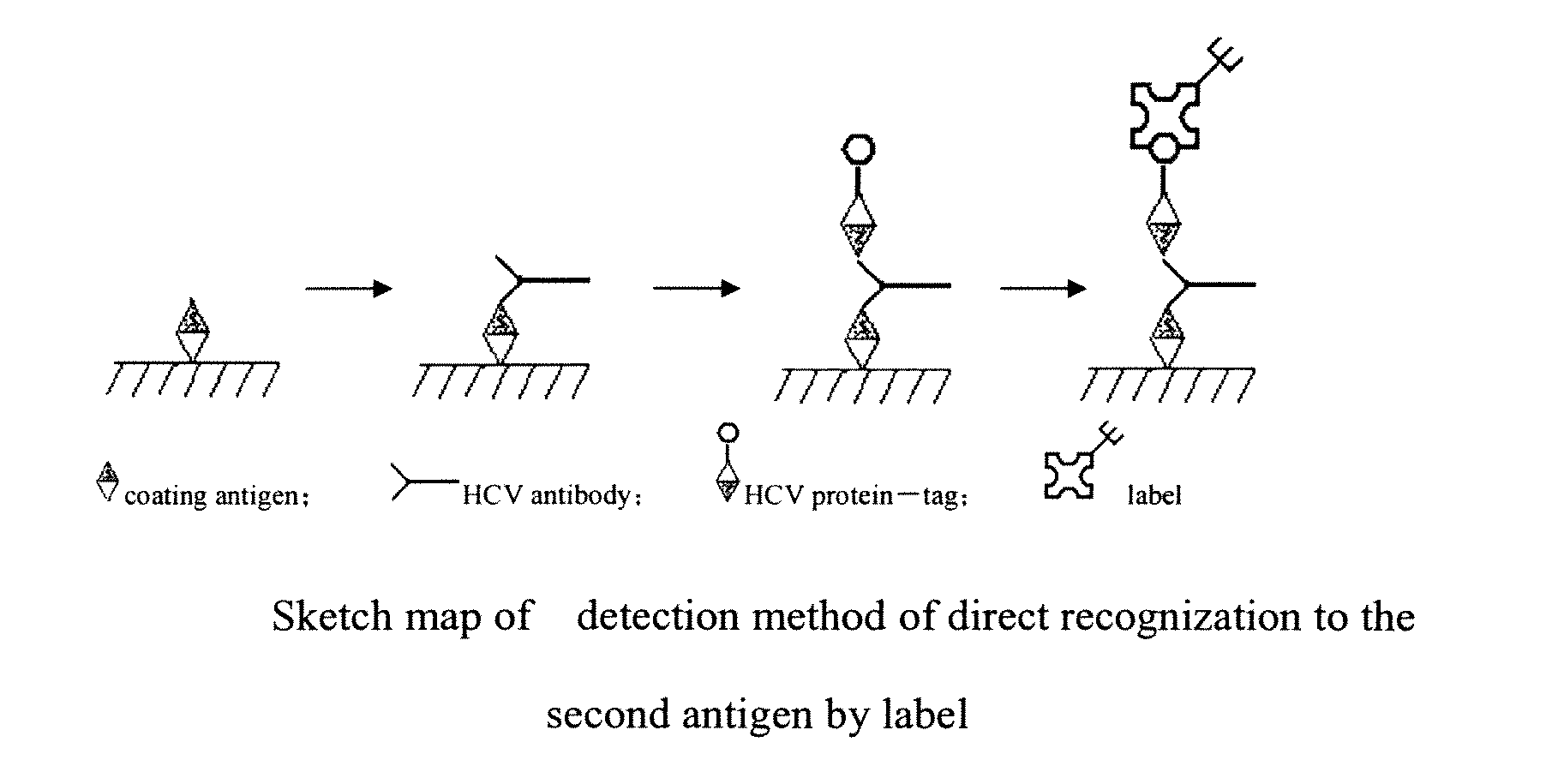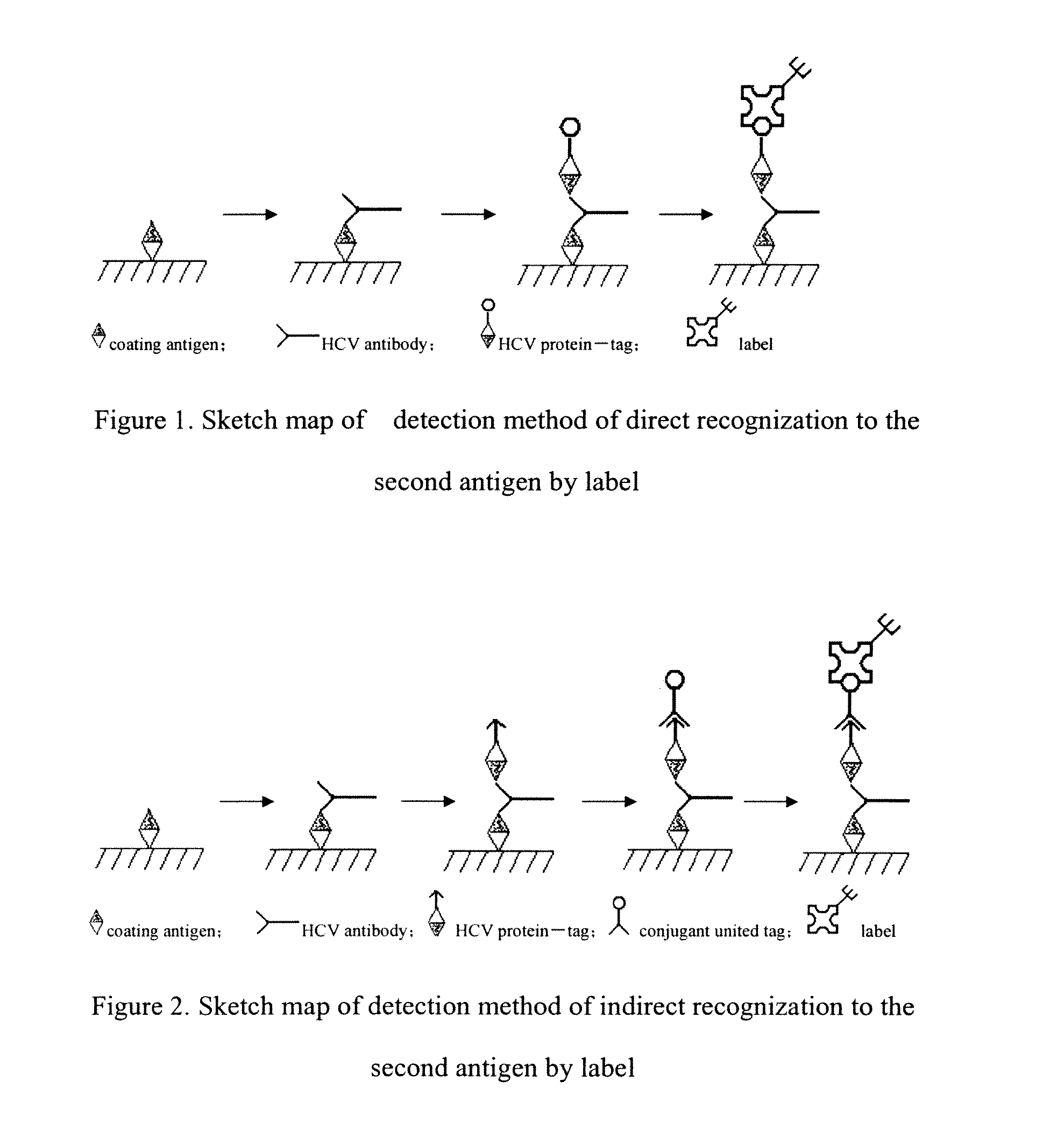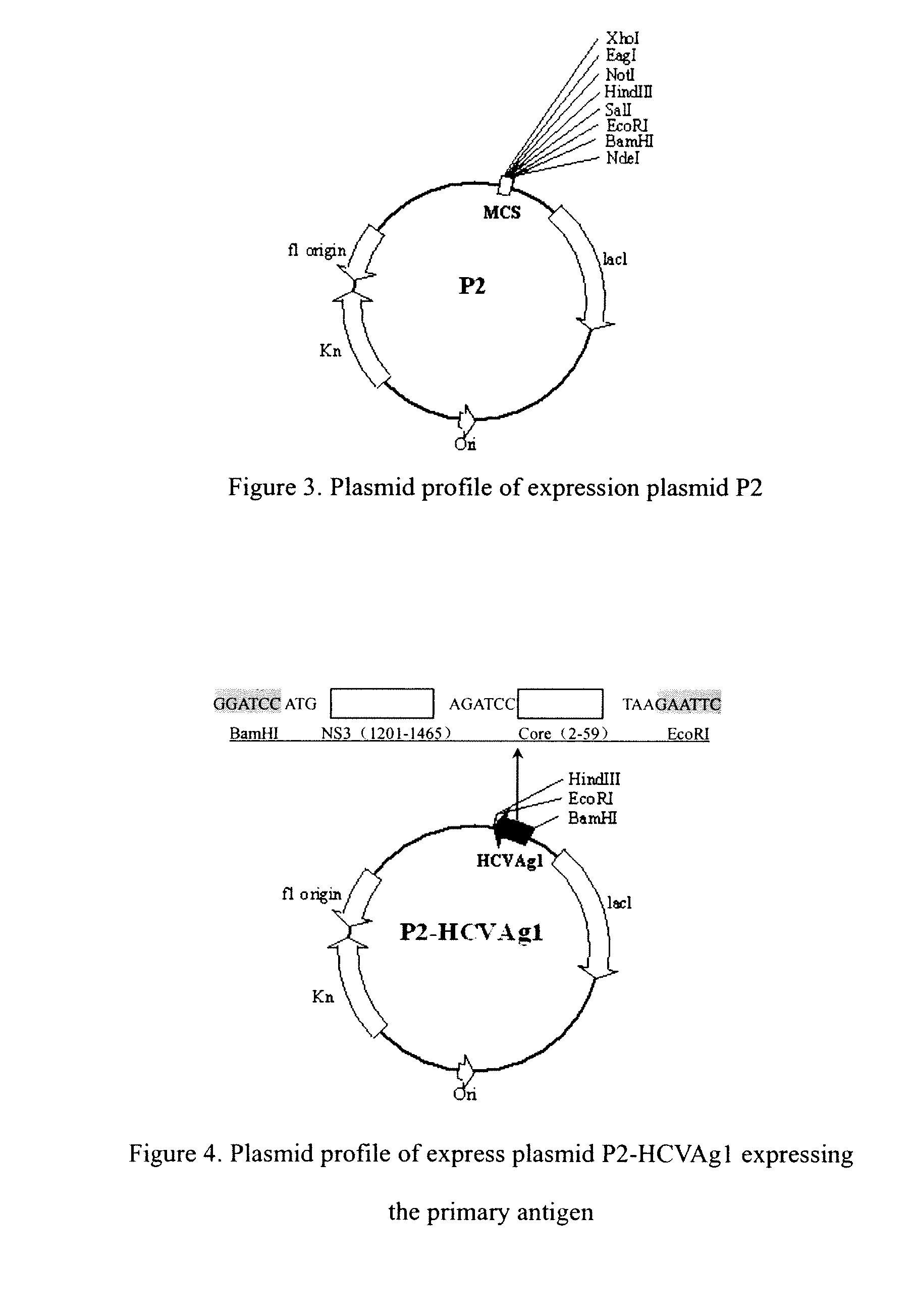Kit for Detecting the Antibody of HCV and Its Preparing Method
a technology for detecting antibodies and kits, applied in the field of immunodeficiency diagnosis, can solve the problems of hcv bringing great harm to human health, heavy burden on society, and insatiable sensitivity and specificity, and achieve the effect of sensitivity and specificity much better
- Summary
- Abstract
- Description
- Claims
- Application Information
AI Technical Summary
Benefits of technology
Problems solved by technology
Method used
Image
Examples
example 2
Preparation of Secondary Antigen
1. Preparation of the Biotinylated Secondary Antigen.
1.1 Enzymatic Biotinylation In Vivo
1.1.1 Co-Transformation and Expression
[0108]Amplify a.a.1-28 gene coding HCV antigen (the 1st nucleotide to 84th nucleotide in SEQ ID NO.1). The sense primer has the BamHI site and the anti-sense primer has the BgIII and EcoRI sites and a termination codon TAA between them. Amplify the gene segment L (SEQ ID NO.3) that codes the biotin acceptor protein, sense primer has BamHI point and anti-sense primer has BgIII and EcoRI points and a termination codon TAA between the two points.
[0109]Then, ligate the sequence coding protein a.a.1-28 cleaved by restriction endonuclease BamHI / EcoRI to the expression vector P2-G cleaved by restriction endonuclease BgIII / EcoRI, get the positive clone-P2-G-CORE (a.a.1-28), named P2-HCVAg2 and the expressed antigen named HCVAg2. Ligate the gene L cleaved by endonuclease BamHI / EcoRI to the expression vector P2-G-CORE(a.a.1-28) cleaved b...
example 3
Screening the HCV Protein Fragments for the Primary Antigen and Secondary Antigen
[0141]At first, we screen the NS3 antigen fragment. According to aforementioned method, we get the clone P2-G (contain the NS3 fragment from a.a.1201 to 1465), express, purify the antigen NS3G, then detect the antigen activity using indirect ELISA. Compared with C33C (NS3 a.a.1192-1457) from patent EP-A-0450931 of Chiron Company and D26 (NS3 a.a.1207-1488) from patent U.S. Pat. No. 6,096,319 of Roche Company, we find that the specificity of NS3G is improved (data show in table 1) and sensitivity correspond. We design the primers at a.a.1201±5 and a.a.1465±8, get the clone P2-NS3 (a.a.1196-1473), P2-NS3(a.a.1206-1457). Those clones are expressed, purified and detected. We find the reactivity of those antigens is similar with NS3G. Finally, we choose fragment a.a.1201-1465 (abbreviation for G) as NS3 antigen fragment of the present invention. The methods of screening are all normal experimental methods th...
example 4
Determination of Molecular Weight of the Heterologous Peptide Tags
[0157]To research the effect of the heterologous peptide tags to activity of the HCV antigen, the present invention designed HCV clones with peptide tags of different length in the N-terminal or C-terminal. Construction of the clones, expression and purification of protein refer to the method in the Example 1 and 2. We use the HCVAg1 as the primary antigen, the purified antigens of above clones as the secondary antigens, HRP labeled MAb anti-His Tag as the enzyme conjugate, to detect 100 HCV positive serum which was diluted with two normal serum, compared with the indirect HCV reagent (InTec Products, Inc.(Xiamen)) and the Murex Anti-HCV 4.0 kit of Abbott Company. The result was shown in table 5 and 6.
TABLE 5The effect of N-terminal peptide tags to activity of HCV antigenThe number of serum positive reaction to different reagentsN-terminalThepeptide tagsdilute multiple of the serumsecondary antigenapproximate MW125A50...
PUM
| Property | Measurement | Unit |
|---|---|---|
| concentration | aaaaa | aaaaa |
| temperature | aaaaa | aaaaa |
| temperature | aaaaa | aaaaa |
Abstract
Description
Claims
Application Information
 Login to View More
Login to View More - R&D
- Intellectual Property
- Life Sciences
- Materials
- Tech Scout
- Unparalleled Data Quality
- Higher Quality Content
- 60% Fewer Hallucinations
Browse by: Latest US Patents, China's latest patents, Technical Efficacy Thesaurus, Application Domain, Technology Topic, Popular Technical Reports.
© 2025 PatSnap. All rights reserved.Legal|Privacy policy|Modern Slavery Act Transparency Statement|Sitemap|About US| Contact US: help@patsnap.com



